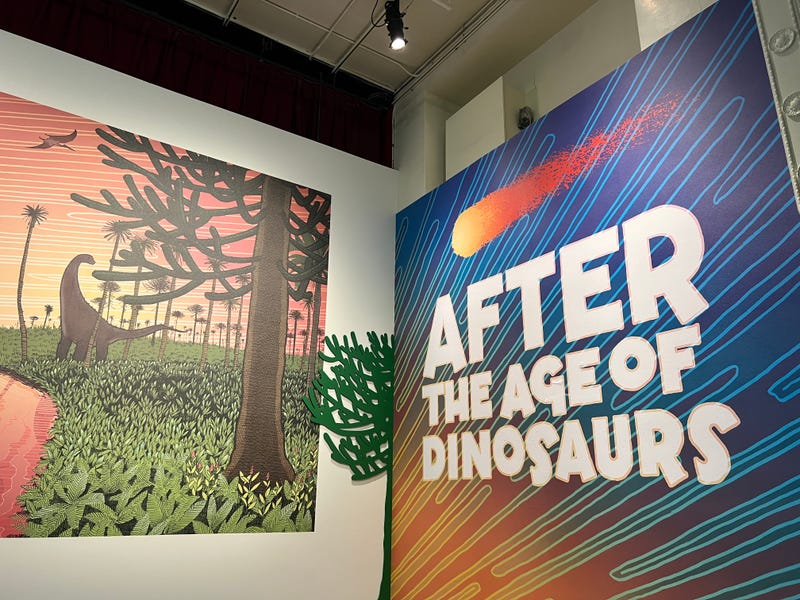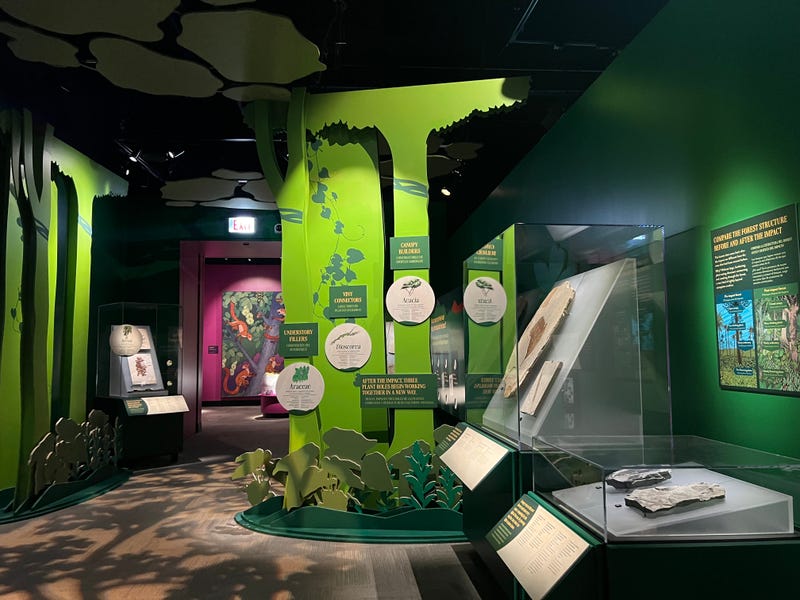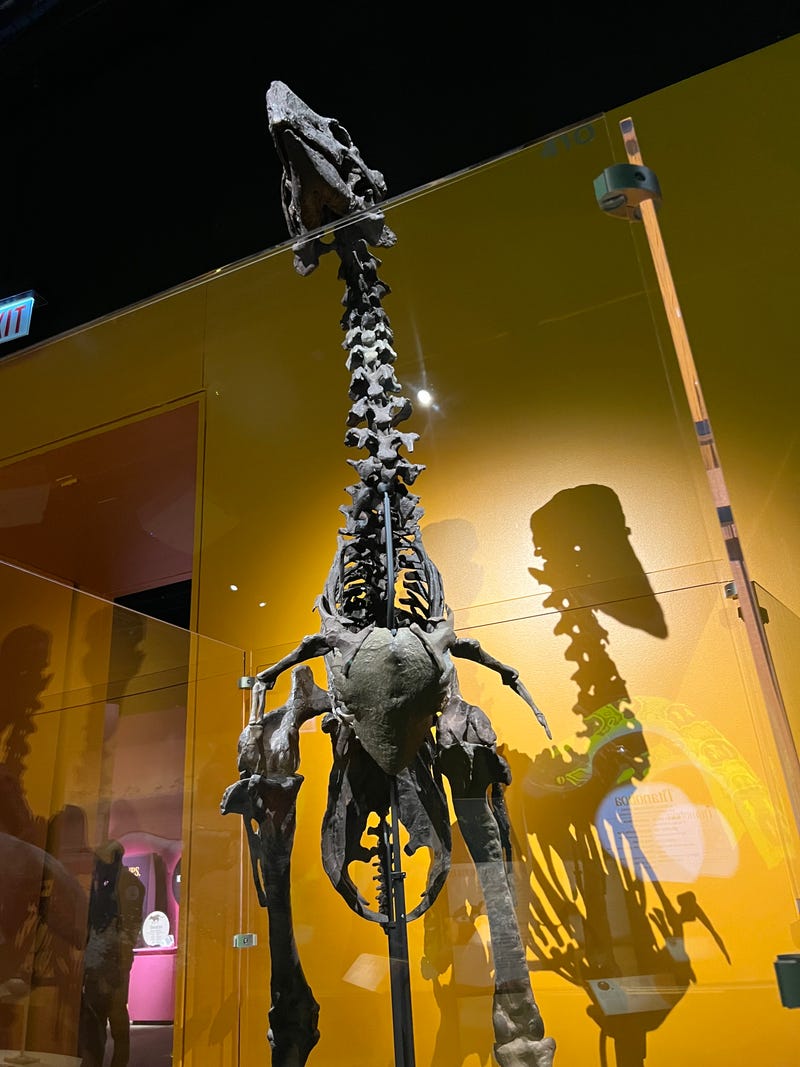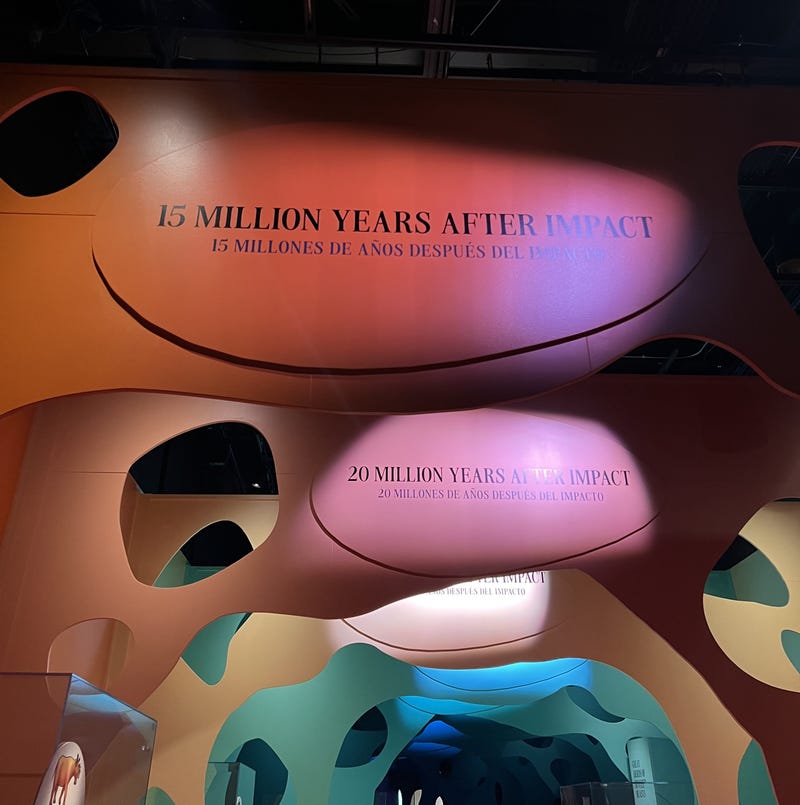
Step into "After the Age of Dinosaurs" at the Field Museum, and you'll be transported back in time 66 million years, when an asteroid collided with Earth and killed off 75% of life.
"It basically covers the first about 15 million years after the extinction of non-bird dinosaurs that happened at the end of the Cretaceous period of Earth's history," said Ken Angielczyk, one of the exhibit's curators.
He said the exhibit starts with the asteroid impact itself.
"Then it talks about how animals and plants ... and sort of the modern world that we think of emerged from that great mass extinction," he said.
As you travel through the exhibit, you'll encounter the first tropical forests dominated by flowering plants and various creatures, including the largest snake to ever live, Titanoboa and six-foot-tall penguins.

Angielczyk said the culmination of the exhibit is a display called the "Green River Formation" in Wyoming.
"We have really spectacular fossil preservation of kind of a whole ecosystem," he said. "And it's kind of our picture of what the world was like once it had recovered from the extinction and things were kind of well on the way again."
As you exit the exhibit, you'll traverse through a "time tunnel" that takes you back to present day that includes fossils from other times, between about 50 million years ago and the present.
He said these fossils can tell us a lot about the world we live in today.
"The scope of human disturbances to the environment today, things like global warming and habitat destruction, are really at a point now where we don't have a historical record of changes like that in our human history," he said. "There are things that are similar in scope that are recorded in the fossil record."

He said these fossils can give scientists and researchers a better idea of what makes some plants and animals more vulnerable to extinction than others, as well as provide insights for conservation today.
"It's also important because in a lot of ways, the world around us today, what we think of as the normal plants and animals, really kind of have their foundations just after the mass extinction event," he said. "So, it's kind of like the roots of our world is in the recovery from the extinction that killed off the dinosaurs."
Co-curator Fabiany Herrera said the exhibit is a great opportunity for visitors to learn about a chapter in Earth's life story that is often overlooked.
"We know dinosaurs went extinct, but we don't know what happened right after that event," he said. "We wanted to show how life changed, how the forest reshaped in so many ways, and what were the animals and plants that survived and the new ones that also arrived after extinction."

He said the exhibit also offers a new perspective of what has been historically thought of as a tragic event.
"This exhibit can inspire the next generation of scientists — kids and grownups — to learn about something that we see as negative, extinction, but ultimately, it shows how life can adapt and can recover after such a dramatic change," he said.
"Age of the Dinosaurs" opens Friday.
